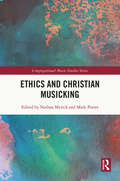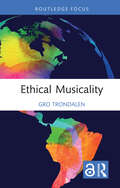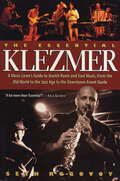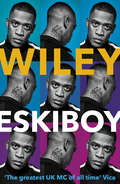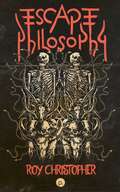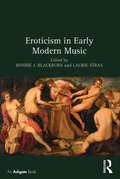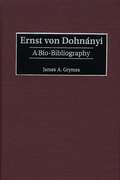- Table View
- List View
Ethics and Christian Musicking (Congregational Music Studies Series)
by Nathan Myrick Mark PorterThe relationship between musical activity and ethical significance occupies long traditions of thought and reflection both within Christianity and beyond. From concerns regarding music and the passions in early Christian writings through to moral panics regarding rock music in the 20th century, Christians have often gravitated to the view that music can become morally weighted, building a range of normative practices and prescriptions upon particular modes of ethical judgment. But how should we think about ethics and Christian musical activity in the contemporary world? As studies of Christian musicking have moved to incorporate the experiences, agencies, and relationships of congregations, ethical questions have become implicit in new ways in a range of recent research - how do communities negotiate questions of value in music? How are processes of encounter with a variety of different others negotiated through musical activity? What responsibilities arise within musical communities? This volume seeks to expand this conversation. Divided into four sections, the book covers the relationship of Christian musicking to the body; responsibilities and values; identity and encounter; and notions of the self. The result is a wide-ranging perspective on music as an ethical practice, particularly as it relates to contemporary religious and spiritual communities. This collection is an important milestone at the intersection of ethnomusicology, musicology, religious studies and theology. It will be a vital reference for scholars and practitioners reflecting on the values and practices of worshipping communities in the contemporary world.
Ethical Musicality (Music and Change: Ecological Perspectives)
by Gro TrondalenEthical Musicality addresses the crossroads between music and ethics, combining philosophical knowledge, theoretical reflection, and practical understanding. When tied together, music and ethics link profoundly, offering real-life perspectives that would otherwise be inaccessible to us. The first part elucidates music and ethics through some influential and selected scholars ranging from Antiquity via modern philosophy to contemporary voices. In the second part, different roles and arenas are illustrated and explored through various music practices in real-life encounters for the musician, the music educator, the music therapist, the musicologist, the ‘lay’ musician, and the music researcher. The third part unfolds an ethical musicality focusing on the body, relationship, time, and space. Following these fundamental existentials, ethical musicality expands our lifeworld, including context, involvement, power, responsibility, sustainability, and hope. Such an ethical musicality meets us with a calling to humanity - offering hope of a ‘good life’.
Ethical Musicality (Music and Change: Ecological Perspectives)
by Gro TrondalenEthical Musicality addresses the crossroads between music and ethics, combining philosophical knowledge, theoretical reflection, and practical understanding. When tied together, music and ethics link profoundly, offering real-life perspectives that would otherwise be inaccessible to us. The first part elucidates music and ethics through some influential and selected scholars ranging from Antiquity via modern philosophy to contemporary voices. In the second part, different roles and arenas are illustrated and explored through various music practices in real-life encounters for the musician, the music educator, the music therapist, the musicologist, the ‘lay’ musician, and the music researcher. The third part unfolds an ethical musicality focusing on the body, relationship, time, and space. Following these fundamental existentials, ethical musicality expands our lifeworld, including context, involvement, power, responsibility, sustainability, and hope. Such an ethical musicality meets us with a calling to humanity - offering hope of a ‘good life’.
The Essential Klezmer
by Seth RogovoyYou can hear it in the hottest clubs in New York, the hippest rooms in New Orleans, Chicago, and San Francisco, and in top concert halls around the world. It's a joyous sound that echoes the past. It's Old World meets New World. It's secular and sacred. It's traditional and experimental. It's played by classical violinist Itzhak Perlman (his all-klezmer album in his all-time best-seller!), the hypno-pop band Yo La Tengo, and avant-gardist John Zorn. It made the late great Benny Goodman's clarinet wail. It's klezmer and it's hot!The Essential Klezmer is the definitive introduction to a musical form in the midst of a renaissance. It documents the history of klezmer from its roots in the Jewish communities of medieval Eastern Europe to its current revival in Europe and America. It includes detailed information about the music's social, cultural, and political roots as well as vivid descriptions of the instruments, their unique sounds, and the players who've kept those sounds alive through the ages. Music journalist Seth Rogovoy skillfully conveys the emotional intensity and uplifting power of klezmer and the reasons for its ever widening popularity among Jews and Gentiles, Hasidim and club kids, grandparents and their grandkids. A comprehensive discography presents the "Essential Klezmer Library," extensive lists of recordings, artists, and styles, as well as an up-to-the-minute resource of music retailers, festivals, workshops, and klezmer Web sites.The Essential Klezmer is as entertaining as it is enlightening.
The Essential Harry Styles Fanbook: His Life - His Songs - His Story
by Mortimer Children's BooksThe no.1 guide for all young fans to celebrate the music phenomenon that is Harry Styles.Packed with inspirational quotes, cool facts and amazing photography – follow Harry's incredible journey from X Factor beginnings and One Direction days to spreading his wings as a solo artist, breaking records and smashing stereotypes along the way.How well do you know Harry? Find out what inspires his music, just why so many of his songs involve fruit and more. Explore his fashion choices, acting roles and just what Harry means by 'TPWK'.
Essential Britten: A Pocket Guide for the Britten Centenary
by John BridcutJohn Bridcut, author of the acclaimed 'Britten's Children', has included significant fresh material which will make the book indispensable for Britten aficionados as well as for those who are discovering the composer's music for the first time. This guide is all about finding a way into Britten's music. An outline of planned chapters:- The Top Ten Britten pieces- Critics' First Impressions- Britten's Life- Britten and Pears- The things they said- The Music (stage works, choral works, songs, chamber music, orchestral works)- The Interpreters of Britten's work- Britten as Performer- The Impresario (English Opera Group and Aldeburgh Festival)- Britten's Homes- Trivial Pursuits
Essays on Opera, 1750-1800
by JohnA. RiceThe study of opera in the second half of the eighteenth century has flourished during the last several decades, and our knowledge of the operas written during that period and of their aesthetic, social, and political context has vastly increased. This volume explores opera and operatic life of the years 1750-1800 through a selection of articles intended to represent the last few decades of scholarship in all its excitement and variety.
Essays on Opera, 1750-1800
by JohnA. RiceThe study of opera in the second half of the eighteenth century has flourished during the last several decades, and our knowledge of the operas written during that period and of their aesthetic, social, and political context has vastly increased. This volume explores opera and operatic life of the years 1750-1800 through a selection of articles intended to represent the last few decades of scholarship in all its excitement and variety.
Essays on Music and Language in Modernist Literature: Musical Modernism (Routledge Studies in Twentieth-Century Literature)
by Katherine O'CallaghanThis volume explores the role of music as a source of inspiration and provocation for modernist writers. In its consideration of modernist literature within a broad political, postcolonial, and internationalist context, this book is an important intervention in the growing field of Words and Music studies. It expands the existing critical debate to include lesser-known writers alongside Joyce, Woolf, and Beckett, a wide-ranging definition of modernism, and the influence of contemporary music on modernist writers. From the rhythm of Tagore’s poetry to the influence of jazz improvisation, the tonality of traditional Irish music to the operas of Wagner, these essays reframe our sense of how music inspired Literary Modernism. Exploring the points at which the art forms of music and literature collide, repel, and combine, contributors draw on their deep musical knowledge to produce close readings of prose, poetry, and drama, confronting the concept of what makes writing "musical." In doing so, they uncover commonalities: modernist writers pursue simultaneity and polyphony, evolve the leitmotif for literary purposes, and adapt the formal innovations of twentieth-century music. The essays explore whether it is possible for literature to achieve that unity of form and subject which music enjoys, and whether literary texts can resist paraphrase, can be simply themselves. This book demonstrates how attention to the role of music in text in turn illuminates the manner in which we read literature.
Essays on Music and Language in Modernist Literature: Musical Modernism (Routledge Studies in Twentieth-Century Literature)
by Katherine O'CallaghanThis volume explores the role of music as a source of inspiration and provocation for modernist writers. In its consideration of modernist literature within a broad political, postcolonial, and internationalist context, this book is an important intervention in the growing field of Words and Music studies. It expands the existing critical debate to include lesser-known writers alongside Joyce, Woolf, and Beckett, a wide-ranging definition of modernism, and the influence of contemporary music on modernist writers. From the rhythm of Tagore’s poetry to the influence of jazz improvisation, the tonality of traditional Irish music to the operas of Wagner, these essays reframe our sense of how music inspired Literary Modernism. Exploring the points at which the art forms of music and literature collide, repel, and combine, contributors draw on their deep musical knowledge to produce close readings of prose, poetry, and drama, confronting the concept of what makes writing "musical." In doing so, they uncover commonalities: modernist writers pursue simultaneity and polyphony, evolve the leitmotif for literary purposes, and adapt the formal innovations of twentieth-century music. The essays explore whether it is possible for literature to achieve that unity of form and subject which music enjoys, and whether literary texts can resist paraphrase, can be simply themselves. This book demonstrates how attention to the role of music in text in turn illuminates the manner in which we read literature.
Eskiboy
by Wiley‘Wiley is Wiley, and if you don’t know me, you don’t know much.’*Winner of the NME Best Music Book Award 2018*A TIMES BOOK OF THE YEARA SUNDAY TIMES BOOK OF THE YEARA TELEGRAPH BOOK OF THE YEAR'The greatest UK MC of all time' NoiseyWiley. Godfather of grime. He's one of Britain's most innovative musicians – and the movement he started in east London in the early 2000s is taking over the world.This is his story. This is ESKIBOY.'Perhaps the most influential musician working in Britain today' Guardian'Wiley is the pioneering force of grime, the most revolutionary musical movement in Britain since punk' The Times'A glimpse of the 21st-century rock'n'roll' Sunday Times
ESG's Come Away with ESG (33 1/3)
by Cheri PercyESG were one of the first bands to sign to British indie label Factory Records, working with famed producer Martin Hannett on their early EPs. The band's signature guitar sound from iconic single 'UFO' has been sampled in hundreds of hip hop records, and everyone from Karen O to Kathleen Hanna lists the South Bronx group as a direct influence. So why do the Scroggins sisters appear as nothing more than a footnote in the 1980s music scene? Through interviews with founding member Renee Scroggins, alongside cult-figures from 1980s New York and North England, this book follows the story of a group of sisters who made it out of the New York projects and into the heart of the dancefloor. Come Away With ESG repositions ESG in their rightful place as punk pioneers and explains howtheir primal beats have paved the way for modern dance music today.
ESG's Come Away with ESG (33 1/3)
by Cheri PercyESG were one of the first bands to sign to British indie label Factory Records, working with famed producer Martin Hannett on their early EPs. The band's signature guitar sound from iconic single 'UFO' has been sampled in hundreds of hip hop records, and everyone from Karen O to Kathleen Hanna lists the South Bronx group as a direct influence. So why do the Scroggins sisters appear as nothing more than a footnote in the 1980s music scene? Through interviews with founding member Renee Scroggins, alongside cult-figures from 1980s New York and North England, this book follows the story of a group of sisters who made it out of the New York projects and into the heart of the dancefloor. Come Away With ESG repositions ESG in their rightful place as punk pioneers and explains howtheir primal beats have paved the way for modern dance music today.
Escape Philosophy: Journeys Beyond the Human Body
by Roy ChristopherThe physical body has often been seen as a prison, as something to be escaped by any means necessary: technology, mechanization, drugs and sensory deprivation, alien abduction, Rapture, or even death and extinction. Taking in horror movies from David Cronenberg and UFO encounters, metal bands such as Godflesh, ketamine experiments, AI, and cybernetics, Escape Philosophy is an exploration of the ways that human beings have sought to make this escape, to transcend the limits of the human body, to find a way out. As the physical world continues to crumble at an ever-accelerating rate, and we are faced with a particularly 21st-century kind of dread and dehumanization in the face of climate collapse and a global pandemic, Escape Philosophy asks what this escape from our bodies might look like, and if it is even possible.
Eruption: The Eddie Van Halen Story
by Paul BranniganArriving in California as a young boy in the early 1960s, Edward Van Halen and his brother Alex were ripe for the coming musical revolution. The sons of a Dutch, saxophone-playing father, the brothers discovered the Beatles, Cream and others. From the moment their hugely influential 1978 debut landed, Van Halen set a high bar for the rock 'n' roll lifestyle, creating an entirely new style of post-'60s hard rock and becoming the quintessential Californian band of the 1980s. But there was also an undercurrent of tragedy to their story, as Eddie's struggles played out in public, from his difficult relationship with the band's original singer, Dave Lee Roth, to substance abuse, divorce and his long-running battle with cancer. With unique insights, Paul Brannigan's Eruption reaches beyond the headlines to explore the cultural and social contexts that shaped this iconic guitarist, while also turning up the dial on a life lived at volume eleven.
Eruption: Conversations with Eddie Van Halen
by Brad Tolinski Chris GillGet a completely new look at guitar legend Eddie Van Halen with this groundbreaking oral history, composed of more than fifty hours of interviews with his family, friends, and colleagues. When rock legend Eddie Van Halen died of cancer on October 6, 2020, the entire world seemed to stop and grieve. Since his band Van Halen burst onto the scene with their self-titled debut album in 1978, Eddie had been hailed as an icon not only to fans of rock music and heavy metal, but to performers across all genres and around the world. Van Halen&’s debut sounded unlike anything that listeners had heard before and remains a quintessential rock album of the era. Over the course of more than four decades, Eddie gained renown for his innovative guitar playing, and particularly for popularizing the tapping guitar solo technique. Unfortunately for Eddie and his legions of fans, he died before he was ever able to put his life down to paper in his own words, and much of his compelling backstory has remained elusive—until now. In Eruption, music journalists Brad Tolinski and Chris Gill share with fans, new and old alike, a candid, compulsively readable, and definitive oral history of the most influential rock guitarist since Jimi Hendrix. It is based on more than 50+ hours of unreleased interviews they recorded with Eddie Van Halen over the years, most of them conducted at the legendary 5150 studios at Ed&’s home in Los Angeles. The heart of Eruption is drawn from these intimate and wide-ranging talks, as well as conversations with family, friends, and colleagues. In addition to discussing his greatest triumphs as a groundbreaking musician, including an unprecedented dive into Van Halen&’s masterpiece 1984, the book also takes an unflinching look at Edward&’s early struggles as young Dutch immigrant unable to speak the English language, which resulted in lifelong issues with social anxiety and substance abuse. Eruption: Conversations with Eddie Van Halen also examines his brilliance as an inventor who changed the face of guitar manufacturing.As entertaining as it is revealing, Eruption is the closest readers will ever get to hearing Eddie&’s side of the story when it comes to his extraordinary life.
Eroticism in Early Modern Music
by Bonnie Blackburn Laurie StrasEroticism in Early Modern Music contributes to a small but significant literature on music, sexuality, and sex in sixteenth- and seventeenth-century Europe. Its chapters have grown from a long dialogue between a group of scholars, who employ a variety of different approaches to the repertoire: musical and visual analysis; archival and cultural history; gender studies; philology; and performance. By confronting musical, literary, and visual sources with historically situated analyses, the book shows how erotic life and sensibilities were encoded in musical works. Eroticism in Early Modern Music will be of value to scholars and students of early modern European history and culture, and more widely to a readership interested in the history of eroticism and sexuality.
Eroticism in Early Modern Music
by Bonnie Blackburn Laurie StrasEroticism in Early Modern Music contributes to a small but significant literature on music, sexuality, and sex in sixteenth- and seventeenth-century Europe. Its chapters have grown from a long dialogue between a group of scholars, who employ a variety of different approaches to the repertoire: musical and visual analysis; archival and cultural history; gender studies; philology; and performance. By confronting musical, literary, and visual sources with historically situated analyses, the book shows how erotic life and sensibilities were encoded in musical works. Eroticism in Early Modern Music will be of value to scholars and students of early modern European history and culture, and more widely to a readership interested in the history of eroticism and sexuality.
Erotic Triangles: Sundanese Dance and Masculinity in West Java (Chicago Studies in Ethnomusicology)
by Henry SpillerIn West Java, Indonesia, all it takes is a woman’s voice and a drum beat to make a man get up and dance. Every day, men there—be they students, pedicab drivers, civil servants, or businessmen—breach ordinary standards of decorum and succumb to the rhythm at village ceremonies, weddings, political rallies, and nightclubs. The music the men dance to varies from traditional gong ensembles to the contemporary pop known as dangdut, but they consistently dance with great enthusiasm. In Erotic Triangles, Henry Spiller draws on decades of ethnographic research to explore the reasons behind this phenomenon, arguing that Sundanese men use dance to explore and enact contradictions in their gender identities. Framing the three crucial elements of Sundanese dance—the female entertainer, the drumming, and men’s sense of freedom—as a triangle, Spiller connects them to a range of other theoretical perspectives, drawing on thinkers from Eve Kosofsky Sedgwick, Lévi-Strauss, and Freud to Euclid. By granting men permission to literally perform their masculinity, Spiller ultimately concludes, dance provides a crucial space for both reinforcing and resisting orthodox gender ideologies.
Erotic Triangles: Sundanese Dance and Masculinity in West Java (Chicago Studies in Ethnomusicology)
by Henry SpillerIn West Java, Indonesia, all it takes is a woman’s voice and a drum beat to make a man get up and dance. Every day, men there—be they students, pedicab drivers, civil servants, or businessmen—breach ordinary standards of decorum and succumb to the rhythm at village ceremonies, weddings, political rallies, and nightclubs. The music the men dance to varies from traditional gong ensembles to the contemporary pop known as dangdut, but they consistently dance with great enthusiasm. In Erotic Triangles, Henry Spiller draws on decades of ethnographic research to explore the reasons behind this phenomenon, arguing that Sundanese men use dance to explore and enact contradictions in their gender identities. Framing the three crucial elements of Sundanese dance—the female entertainer, the drumming, and men’s sense of freedom—as a triangle, Spiller connects them to a range of other theoretical perspectives, drawing on thinkers from Eve Kosofsky Sedgwick, Lévi-Strauss, and Freud to Euclid. By granting men permission to literally perform their masculinity, Spiller ultimately concludes, dance provides a crucial space for both reinforcing and resisting orthodox gender ideologies.
Erotic Triangles: Sundanese Dance and Masculinity in West Java (Chicago Studies in Ethnomusicology)
by Henry SpillerIn West Java, Indonesia, all it takes is a woman’s voice and a drum beat to make a man get up and dance. Every day, men there—be they students, pedicab drivers, civil servants, or businessmen—breach ordinary standards of decorum and succumb to the rhythm at village ceremonies, weddings, political rallies, and nightclubs. The music the men dance to varies from traditional gong ensembles to the contemporary pop known as dangdut, but they consistently dance with great enthusiasm. In Erotic Triangles, Henry Spiller draws on decades of ethnographic research to explore the reasons behind this phenomenon, arguing that Sundanese men use dance to explore and enact contradictions in their gender identities. Framing the three crucial elements of Sundanese dance—the female entertainer, the drumming, and men’s sense of freedom—as a triangle, Spiller connects them to a range of other theoretical perspectives, drawing on thinkers from Eve Kosofsky Sedgwick, Lévi-Strauss, and Freud to Euclid. By granting men permission to literally perform their masculinity, Spiller ultimately concludes, dance provides a crucial space for both reinforcing and resisting orthodox gender ideologies.
Eroica: The First Great Romantic Symphony (The Landmark Library #3)
by James Hamilton-PatersonIn 1805, the world of music was set on its ears by a new work from a German composer. Intellectually and emotionally, Beethoven's Third Symphony, the 'Eroica', was revolutionary music. After those first two stunning chords, Western music was never the same again. And the whiff of actual political revolution was woven into the work, for it was originally dedicated to Napoleon Bonaparte, a dangerous hero for a composer dependent on conservative royal patronage. James Hamilton-Paterson reconstructs this great moment in Western culture, the shock of the music and the symphony's long afterlife. The Landmark Library is a testament to the achievements of mankind from the late stone age to the present day. Each volume is handsomely illustrated and carries a text of 25,000 words devoted to a crucial theme in the history of civilization.
Ernst von Dohnányi: A Bio-Bibliography (Bio-Bibliographies in Music)
by James A. GrymesAs a result of both his political reputation--destroyed by false charges of Nazism after World War II--and his rejection of avant-garde techniques, the recordings and compositions of Ernst von Dohnányi went largely ignored for most of the 20th century. In recent years, however, musicians have begun to revise their interpretations of 20th century music to include compositional and performance styles that, like Dohnányi's, adhered more closely to 19th century aesthetics. Although performers and audiences worldwide have started to rediscover his musical legacy, scholarship has not kept pace with their growing interest. This bio-bibliography corrects that. As the first scholarly examination in English of Dohnányi's life and work, it serves as the perfect introduction to an unfairly neglected 20th century artist.A brief but insightful biography is followed by a list of works that reflects the most current research of Dohnányi's creative output. It includes nearly 200 entries, each of which collects such information as the date of composition, the instrumentation of the work, the publisher of its first edition, the location of the manuscript, and the date and location of its premiere. The discography lists 400 sound recordings of the composer's work, and the annotated bibliography includes 500 entries, emphasizing performance reviews that offer substantial information about Dohnányi's works and style.
Ernst Kurths Grundlagen des linearen Kontrapunkts: Ursprung und Wirkung eines musikpsychologischen Standardwerkes
by Luitgard SchaderIm Jahre 1917 veröffentlichte der Berner Privatdozent Ernst Kurth eine umfangreiche Monographie mit dem Titel "Grundlagen des linearen Kontrapunkts". Mit diesem Werk beabsichtigte er, die primär an harmonischen Verläufen orientierte Werkanalyse durch eine gezielte Interpretation melodischer Zusammenhänge zu bereichern. Obgleich das Buch während des Ersten Weltkrieges erschien, stieß es in Fachkreisen auf große Verbreitung und gelangte innerhalb von nur zehn Jahren zur dritten Auflage. Dabei wurde die ausdrücklich zur Bach-Interpretation entwickelte Terminologie des Linearen Kontrapunkts von vielen Musikwissenschaftlern aufgegriffen und gegen Kurths Willen zur Analyse zeitgenössischer Werke herangezogen. Paul Bekker vermutete gar, Kurths Theorie werde den künftigen Kompositionsstil beeinflussen, was Ernst Krenek, einer der betroffenen Komponisten, später mit großem zeitlichen Abstand bestätigt. Eine derart vielfältige Rezeption des Linearen Kontrapunkts führt zu der Vermutung, dass Kurths Bach-Interpretation geisteswissenschaftliche Grundzüge aufweist, die zu Beginn der 20er Jahre in Musikerkreisen eine gewisse Allgemeingültigkeit besassen.
Erik Satie: Music, Art and Literature (Music and Literature)
by Caroline PotterErik Satie (1866-1925) was a quirky, innovative and enigmatic composer whose impact has spread far beyond the musical world. As an artist active in several spheres - from cabaret to religion, from calligraphy to poetry and playwriting - and collaborator with some of the leading avant-garde figures of the day, including Cocteau, Picasso, Diaghilev and René Clair, he was one of few genuinely cross-disciplinary composers. His artistic activity, during a tumultuous time in the Parisian art world, situates him in an especially exciting period, and his friendships with Debussy, Stravinsky and others place him at the centre of French musical life. He was a unique figure whose art is immediately recognisable, whatever the medium he employed. Erik Satie: Music, Art and Literature explores many aspects of Satie's creativity to give a full picture of this most multifaceted of composers. The focus is on Satie's philosophy and psychology revealed through his music; Satie's interest in and participation in artistic media other than music, and Satie's collaborations with other artists. This book is therefore essential reading for anyone interested in the French musical and cultural scene of the late nineteenth and early twentieth century.
